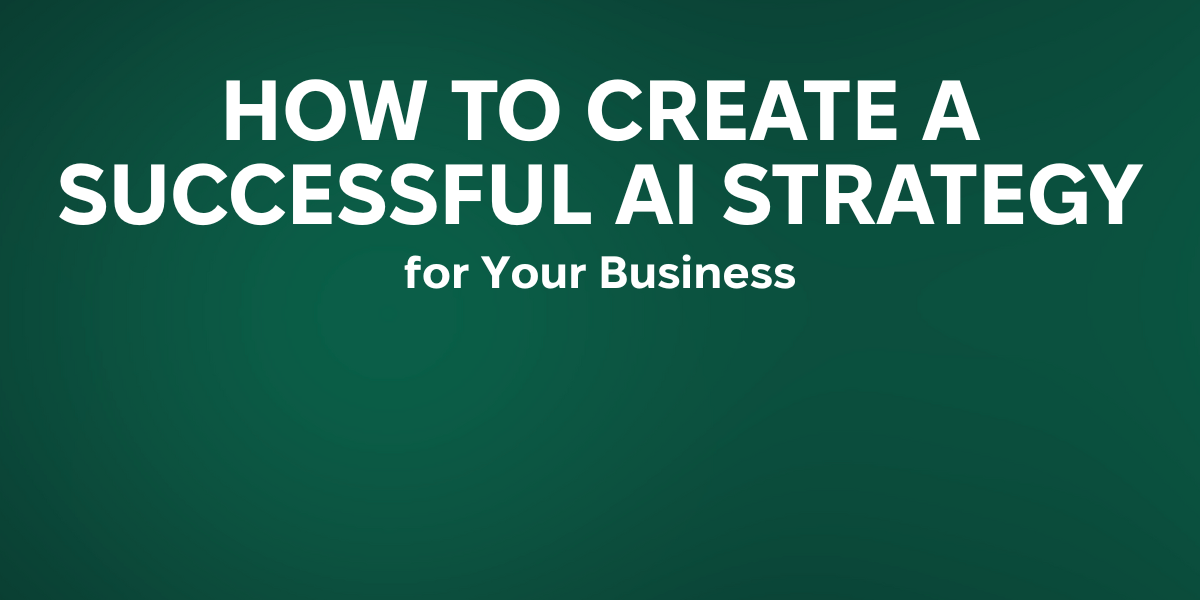According to McKinsey Global Institute, companies with a clear AI strategy are 2.3 times more likely to achieve successful implementations. Meanwhile, IBM research reveals that organizations with structured AI governance see 15% higher ROI compared to those without strategic frameworks. The difference between success and failure isn't the technology itself—it's the strategy behind it.
The Cost of Strategy-less AI Adoption
Without a clear roadmap, businesses fall into predictable traps. Deloitte's analysis of AI adoption barriers shows that 37% of organizations cite "lack of clear business case" as their primary challenge, while 35% struggle with "unclear AI strategy and roadmap." These aren't technical problems—they're strategic ones.
Consider the typical scenario: a company discovers ChatGPT, purchases enterprise licenses, and expects immediate transformation. Six months later, adoption remains low, productivity gains are minimal, and leadership questions the investment. The technology works perfectly; the strategy doesn't exist.
MIT Sloan research demonstrates that organizations with formal AI strategies achieve 73% faster time-to-value compared to those taking ad-hoc approaches. The data is clear: strategy precedes success.
Building Your AI Strategy Foundation
Creating an effective AI strategy requires more than identifying use cases. It demands a systematic approach that aligns technology capabilities with business objectives while preparing your organization for transformation.
Start with business objectives, not technology capabilities. Your AI strategy should answer fundamental questions: What business problems are you solving? How will you measure success? Which processes offer the highest ROI potential? Gartner research shows that companies beginning with clear business outcomes achieve 40% better results than those starting with technology exploration.
Assess your current digital infrastructure. AI doesn't work in isolation—it requires connected systems, clean data, and streamlined workflows. Harvard Business Review findings indicate that companies with high-quality data foundations are 58% more likely to exceed revenue goals when implementing AI. Before selecting AI tools, audit your existing technology stack, data quality, and process efficiency.
Define your change management approach. PwC's workforce research reveals that 73% of executives believe AI will significantly change their business in the next three years, yet only 20% have started systematic change management. Your strategy must address how you'll build AI literacy, overcome resistance, and create sustainable adoption patterns.
The Six-Phase Strategic Framework
Successful AI transformation follows a predictable pattern. Organizations that achieve sustainable results implement these phases systematically rather than simultaneously.
Phase 1: Assessment and readiness evaluation. Conduct comprehensive audits of your systems, data, workflows, and team capabilities. This diagnostic phase reveals gaps between current state and AI requirements. Forrester data shows that thorough assessments reduce implementation risks by 45%.
Phase 2: Digital foundation optimization. Before layering AI onto existing systems, create unified infrastructure. Connect fragmented tools, clean and structure data, and eliminate manual handoffs between systems. This foundation work enables reliable automation later.
Phase 3: Strategic use case selection. Identify AI applications that align with business priorities and offer measurable impact. Focus on processes that are repetitive, data-rich, and currently consuming significant human time. McKinsey analysis indicates that organizations targeting the right use cases achieve 3-5x better ROI.
Phase 4: Pilot implementation and testing. Deploy AI solutions in controlled environments with clear success metrics. Test assumptions, measure outcomes, and refine approaches before scaling. Companies using structured pilot programs show 60% higher success rates in full implementations according to Accenture research.
Phase 5: Scaling and integration. Expand successful pilots across the organization while maintaining quality and governance standards. This phase requires change management, training, and continuous optimization to achieve enterprise-wide impact.
Phase 6: Governance and continuous improvement. Establish frameworks for monitoring AI performance, managing risks, and identifying new opportunities. Organizations with formal AI governance achieve 15% higher ROI and 23% better risk management according to IBM research.
Measuring Strategic Success
Effective AI strategies include clear metrics that connect technology investments to business outcomes. Leading organizations track both operational and strategic indicators.
Operational metrics focus on immediate efficiency gains: time saved, costs reduced, and processes automated. These provide early validation of AI value and build momentum for broader adoption. Accenture research shows that companies achieving 20-30% efficiency gains in pilot projects typically see 3-5x ROI within 12 months.
Strategic metrics measure long-term competitive advantage: revenue growth, market share expansion, and innovation capabilities. These indicators demonstrate AI's role in business transformation rather than simple cost reduction.
Adoption metrics track organizational change: user engagement, skill development, and cultural shifts. Without sustainable adoption, even successful AI implementations fail to deliver lasting value. Companies with high adoption rates achieve 40% better long-term outcomes according to PwC studies.
Common Strategy Pitfalls to Avoid
Learning from others' mistakes accelerates your strategic development. Research reveals patterns in AI strategy failures that are easily preventable.
Avoiding the "tool-first" trap. Many organizations select AI tools before defining business requirements. This approach leads to solutions searching for problems rather than strategic implementations addressing real needs. Start with business challenges, then identify appropriate technology.
Preventing data foundation neglect. Ventana Research indicates that poor data quality causes 80% of AI project delays. Your strategy must prioritize data cleaning, structuring, and governance before deploying advanced AI capabilities.
Managing unrealistic timeline expectations. AI transformation requires time for foundation building, pilot testing, and scaling. Strategies promising immediate enterprise-wide results typically fail. Plan for 90-day digital foundation periods followed by 6-12 month implementation phases.
Your Strategic Next Steps
Building an effective AI strategy requires systematic planning and disciplined execution. Begin by conducting honest assessments of your current capabilities, then develop phased approaches that build momentum through early wins while preparing for long-term transformation.
Immediate actions include auditing your existing systems, identifying high-value use cases, and building leadership alignment around AI objectives. Medium-term goals focus on foundation building, pilot implementations, and team education. Long-term objectives center on scaling successful initiatives and establishing competitive advantages through AI capabilities.
The organizations succeeding with AI aren't those with the most advanced technology—they're those with the clearest strategies. Your strategic framework becomes the foundation for sustainable AI transformation that delivers measurable business value while preparing your organization for an AI-driven future.






.png)